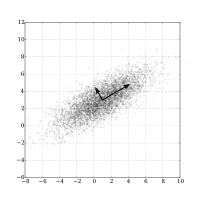
Photo from wikipedia
Background and Objectives: This study aimed to group diseases classified by the International Classification of Diseases using principal component analysis, and discuss a systematic approach to reducing the preventable death… Click to show full abstract
Background and Objectives: This study aimed to group diseases classified by the International Classification of Diseases using principal component analysis, and discuss a systematic approach to reducing the preventable death rate from a perspective of public health. Materials and Methods: Using a 10-year follow-up analysis of the Korean Longitudinal Study of Aging (KLoSA) data, this study obtained de-identified data including participants’ data of community-dwelling individuals aged ≥45 years from 2006 to 2016. Participants were randomly selected using a multistage, stratified probability sampling based on geographical area and housing type. We excluded 37 participants with missing information at baseline and included 10,217 study participants. This study used the principal component analysis to extract comorbidity patterns, and chi-square test and Cox proportional hazards models for analyzing the association between the factors of interest. Results: Principal component 1 (diabetes, heart disease, and hypertension) was associated with an increased hazard ratio (HR) of 1.079 (95% confidence interval (CI) 1.031–1.129, p = 0.001). Principal component 3 (psychiatric and cerebrovascular diseases) was related to an increased HR of 1.134 (95% CI 1.094–1.175, p < 0.0001). Moreover, principal component 4 was associated with a high HR of 1.172 (95% CI 1.130–1.215, p < 0.0001). However, among participants aged between 45 and 64 years, principal component 4 showed a meaningfully increased HR of 1.262 (95% CI 1.184–1.346, p < 0.001). In this study, among the four principal components, three were statistically associated with increased mortality. Conclusions: The principal component analysis for predicting mortality may become a useful tool, and artificial intelligence (AI) will improve a value-based healthcare strategy, along with developing a clinical decision support model.
Journal Title: Medicina
Year Published: 2020
Link to full text (if available)
Share on Social Media: Sign Up to like & get
recommendations!